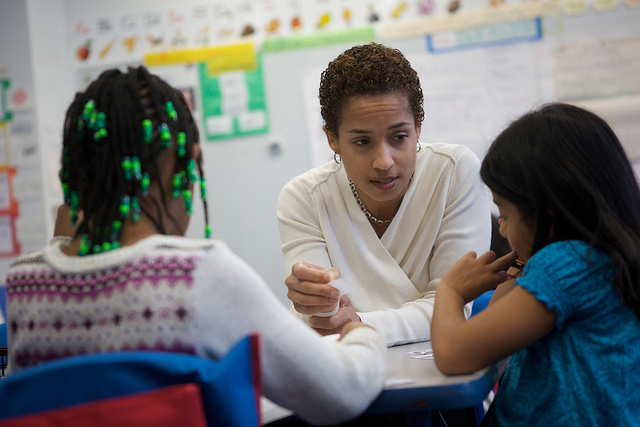
A conversation with my mentor has always stuck in my mind: Teaching is not about me, directly, it’s about serving my students. Teaching is about providing each of my students what they need to learn the material and to grow academically and as an individual. Teaching is about student learning.
This has always been useful to me when, as a teacher, I reviewed my own EVAAS teacher reports. I’ve heard other educators ask: My teaching doesn’t change. Why does my EVAAS score change?
As I thought about how to best answer this question, I could not help but remember what my mentor said.
First, it is important to remember that EVAAS is a tool to foster growth in both students and teachers alike. As a teacher, the EVAAS value-added reports along with the diagnostic reports provided me an overview of my progress. Was I effective at growing my students? Was I more effective at growing my highest achieving students or my lowest achieving students? Are there areas where I can focus on my professional growth in the upcoming year? The data are a great place to start asking questions. It allows us to see where we excel and where we want to improve.
I hung my hat on being a great teacher with low achieving students. Although I taught a full spectrum of students, from high achieving to low achieving, I felt that I excelled with my lower achieving students. By all observable accounts, I was getting it right. The art of my teaching was solid. When I began to dig into my own EVAAS scores, I realized that although I was making adequate progress with my lowest-achieving students, I was not growing this group of students at a rate that would help them to catch up to their grade-level peers. I was getting the observables right. I was missing the mark on delivering the content the best way. Without the data, I would not have been able to become a better teacher.
Secondly, and most important to the question noted above, even if a teacher chooses not to drastically change his or her craft year to year, their students will change. For example, I could have spent most of my school year teaching high-achieving students but, historically, I may not have had much exposure to teaching those students. When all my data from that school year is released in EVAAS, I may see that I am not growing these high achieving students at the same rate as other students across the state. As a result, I could show as not meeting the growth expectation.
In EVAAS, this would mean there is significant evidence that my students were making less than the average amount of growth. The next school year, I may find myself teaching more students with lower entering achievement. Without making many major changes, I may find that my EVAAS data shows that I am an effective or highly effective teacher. Some educators may say that nothing changed, and they don’t understand how the EVAAS score changed. The students changed and that makes a difference.
Students change every class. Students change every year. If we are confused as to why EVAAS scores change, start with the data. What do you know about your own effectiveness with different types of students? How can you begin to grow as a teacher and optimize your lesson plans and activities for the students before you, in that given class period or that given school year? A teacher who may be great with one type of students, such as those with lower entering achievement, may find that the same strategies are less successful with other types of students.
One of the things I loved most about teaching high school is that no class of students was ever the same. Although challenging at times, I learned from great teachers to embrace this reality and to value differentiation. Students come to us at various achievement levels, with different learning styles, post-secondary goals and prior schooling experiences. The diversity and complexity of my students and classes was something I grew to celebrate.

1 Comment
Good piece, Jennifer! Really appreciate your transparency and perspective. The net-net: Data is our friend.